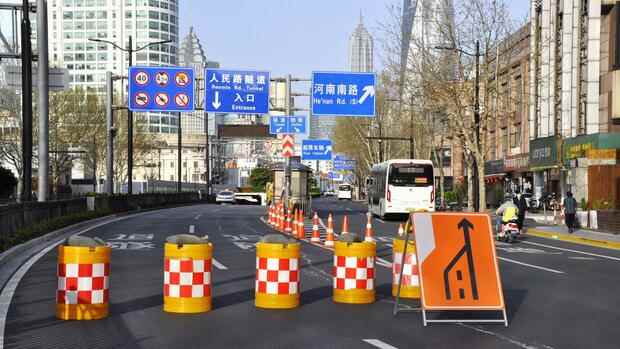Bangkok China’s growth in Asia is only mediocre: According to forecasts by the Asian Development Bank (ADB), Asia’s largest economy is losing its status as the continent’s economic engine.
Instead, states in South and Southeast Asia are moving to the top of the growth rankings, according to a report by the bank released on Wednesday. However, the war in Ukraine and new coronavirus waves could slow down the expected recovery.
Overall, the bank’s economists assume in their “Asian Development Outlook” that economic output in Asia’s emerging countries will increase by 5.2 percent this year. “According to our forecasts, Asia remains on course for economic recovery,” said ADB chief economist Albert Park.
But the development is uneven. While countries like India and Vietnam are catching up, growth in China is slowing down.
For the People’s Republic, the ADB is assuming moderate growth in gross domestic product (GDP) of five percent this year – primarily due to comparatively weak domestic demand. This would put the country at the lower end of the growth target of five to 5.5 percent set by the government in Beijing.
Lockdowns are weighing on China’s economy
The escalation of the corona infection situation in the country threatens to further worsen the prospects: The consequences of the lockdown in the economic metropolis of Shanghai, which was extended indefinitely on Tuesday, are not yet taken into account in the ADB forecast.
“The situation is very uncertain right now,” Park said. “If the virus were to spread to more Chinese cities and the government maintains a very strict zero-Covid policy, it could massively disrupt economic activity in China,” he warned. For 2023, too, he expects China’s growth rate of 4.8 percent to be below the average for Asia’s emerging markets.
In contrast, countries that have largely lifted their coronavirus restrictions can expect large increases. First and foremost is India – Asia’s third largest economy after China and Japan: The ADB is forecasting economic growth of 7.5 percent for the country this year and even eight percent for 2023 – mainly driven by public investment projects.
Increasing oil prices as a result of the Ukraine war are burdening India’s economic development. However, the ADB economists believe that the effects on inflation will be limited – partly because of state energy subsidies and the Indian plan to buy oil from Russia at a reduced price.
Corresponding plans had recently been met with criticism in the West. However, the government in New Delhi does not want to withdraw from the deals with the Kremlin: “If the fuel is available at a discount, why shouldn’t I buy it?” said Finance Minister Nirmala Sitharaman.
High growth in Malaysia and Vietnam
In other parts of Asia, too, the ADB assumes that the effects of the Ukraine war will only be limited. Direct trade relations of most countries with Russia and Ukraine are small. The countries would primarily feel the effects of rising commodity prices.
However, a further escalation of the conflict could also lead to deeper economic cuts in Asia – among other things in the form of a higher inflation rate. The bank is currently still assuming a comparatively moderate inflation rate of 3.7 percent in Asia’s emerging countries.
An escalation of the Ukraine war could also affect Asia’s exports. However, countries such as Bangladesh, which is also one of the growth drivers in South Asia, have so far managed to cushion the setbacks. The country with a population of 165 million came through the pandemic without a recession and already achieved GDP growth of almost seven percent last year.
The ADB is also expecting a growth rate of 6.9 and 7.1 percent for this year and next. This makes Bangladesh one of the most dynamic economies on the continent.
In Southeast Asia, Malaysia and the Philippines are the best performers with a projected growth rate of six percent and Vietnam with 6.5 percent.
Malaysia, an important location for the electronics industry, is benefiting from continued high demand for semiconductors. The country also exports oil and natural gas and is a beneficiary of higher energy prices.
In Vietnam, the government said goodbye to its zero-Covid policy, which was as strict as in China last year. The ADB judges that the timely departure from tough containment measures is now supporting the upswing.
ADB chief economist Park believes that Southeast Asian economies will continue to lag China in terms of economic growth in the future. “China had extraordinarily high growth rates for decades, but now there are structural headwinds – for example in terms of the rapidly aging population,” he says.
Innovations are necessary for increases in productivity – and China has its difficulties with that. “Other parts of Asia will come to the fore when it comes to economic growth in the future.”
More: These corona rules now apply to trips to Thailand, Singapore and Co.
